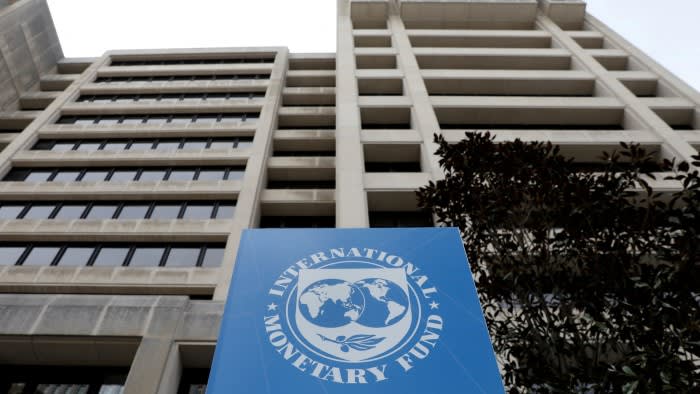Stay informed with free updates
Simply sign up to the Global Economy myFT Digest — delivered directly to your inbox.
Global public debt is forecast to exceed $100tn by the end of this year, underscoring the need for tougher action to stabilise borrowing in major economies around the world, the IMF has said.
Government debt, which ballooned during the Covid-19 pandemic, has continued to rise as countries embrace higher spending to stimulate economic growth, with the US and China driving the surge, the IMF said in a report on Tuesday.
Debt was set to approach 100 per cent of global GDP by the end of the decade, the fund added, warning that major economies’ plans to stabilise borrowing “fall far short of what is needed”.
The findings highlight the enormous surge in public debt in the past half-decade, with the ratio to GDP now 10 percentage points above the level on the eve of the pandemic. The phenomenon is widespread, the research showed: countries with debt that is not expected to stabilise account for more than half of global debt and about two-thirds of world GDP.
The UK, Brazil, France, Italy and South Africa are among the countries where debt is expected to carry on rising, the IMF said in its Fiscal Monitor report released ahead of the fund’s annual meetings in Washington next week.
“Future debt levels could be even higher than projected, and much larger fiscal adjustments than currently projected are required to stabilise or reduce it with a high probability,” the fund found.
“Countries should confront debt risks now with carefully designed fiscal policies that protect growth and vulnerable households, while taking advantage of the monetary policy easing cycle.”
With inflationary pressures receding and the US Federal Reserve, the Bank of England and the European Central Bank lowering borrowing costs, “now is an opportune time” for economies to start rebuilding fiscal buffers, the IMF said.
It added that “in countries where debt is projected to increase further . . . delaying action will make the required adjustment even larger”. It called for “cumulative fiscal adjustment” — tax rises or spending cuts — of 3 per cent to 4.5 per cent of GDP to bring down debt across the world.
“Advanced economies should reprioritise expenditures, advance entitlement reforms, increase revenues through indirect taxes where taxation is low and remove inefficient tax incentives,” it said.
It added that government spending to fund the transition to greener energy together with ageing populations and security concerns were likely to add to fiscal pressures over the coming years.
The IMF’s report comes as China tries to rejuvenate its economy with a huge fiscal stimulus and just weeks before the US presidential election.
The economic plans of both Donald Trump and Kamala Harris are forecast to swell US federal debt by trillions of dollars, according to a recent report by the Committee for a Responsible Federal Budget.
Concerns about rising levels of borrowing have contributed to a sell-off in government bond markets in recent weeks, including in the UK and France.
UK chancellor Rachel Reeves is expected to use her Budget this month to tweak the definition of public debt used for the UK’s fiscal rules to allow for more borrowing.
The ECB said in a report this year that long-term challenges were “likely to exert pressure on public finances” in the euro area.
Hitting a government debt-to-GDP ratio of 60 per cent by 2070, from today’s debt levels, would require governments to “immediately and permanently” increase their primary balance — the fiscal balance excluding net interest payments on public debt — by 2 per cent of GDP on average, the ECB said.
However, the IMF report found that forecasters have a persistent tendency to underestimate how rapidly debt can rise. Realised debt-to-GDP ratios five years ahead can end up being 10 percentage points higher than expected, said the fund.
https://www.ft.com/content/6833f2ab-1741-441f-affd-ecfbedeae498


